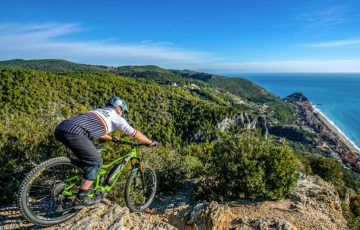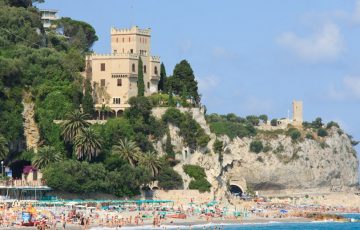
History
One of the “most beautiful villages in Italy”, Finalborgo is a jewel just a stone’s throw from the sea, with an enchanting historic atmosphere. The Historic Centre of Finalborgo, the ancient Burgum Finarii, was for several centuries the capital of the Marquisate and the administrative centre of Finale. It stands in a strategic position on the alluvial plain at the confluence of the Pora and Aquila streams.
In addition, it is home to several arts and craft studios, small shops selling traditional products and different places to visit.
Every year at the end of August, Finalborgo, capital of the Marquisate, returns for four days to the 15th century and speaks Portuguese.
The Finale region offers finds from a territory rich in great landscape, natural beauty and monuments.
When visiting Finale Ligure you can admire the cave of the white sands, a record of European prehistory, visit the chapel of Santa Maria degli Oliveri whose frescoes constitute one of the most important examples of medieval painting in Liguria, visit the Fortress of Castel Govone and Castel Franco or take part in the beautiful archeo-trekking tour of Finale’s archaeological sites, organised by the Finale archaeological museum.

The Finalese is a territory overlooking the sea, where the high cliffs of the coastline are interrupted by a sequence of capes and promontories, from east to west: Capo Noli, the promontory of Varigotti with Punta Crena, the Capo di San Donato and that of Colombera, Gòttero and finally Caprazoppa (formerly Cravazotta, whose name means “Pit of the Goat”), the mountainous massif also known as the Capo di Borgio, marking the end of Finale’s territories.
The local stone plays a starring role in defining the landscape, not least for the evocative natural environments which it generates, thanks to the karstification that characterises it both on the surface and at depth, with the formation of natural sinkholes, caves and caverns.
The “Pietra di Finale” (Finale stone) is the only example in Liguria of material dating back to the Miocene age. It covers a large part of the northern and south-western area of the Finale region in the form of a plateau crossed by the valleys of Pora, Aquila, Sciusa and Rio Cornei.
It is a resistant and compact limestone which is pinkish-white in colour and gives rise to imposing vertical walls that can reach 200 metres in height.
Monte Cucco is characterised by the traditional “Finale stone”; this stratified limestone makes the
area perfect for sport climbing.
Below are links to the sites where you will find all the details.
http://turismo.comunefinaleligure.it/it/luoghi/archeologia
http://turismo.comunefinaleligure.it/it/natura/pietra-finale-monte-cucco
http://turismo.comunefinaleligure.it/it/natura/fiori-finalese




